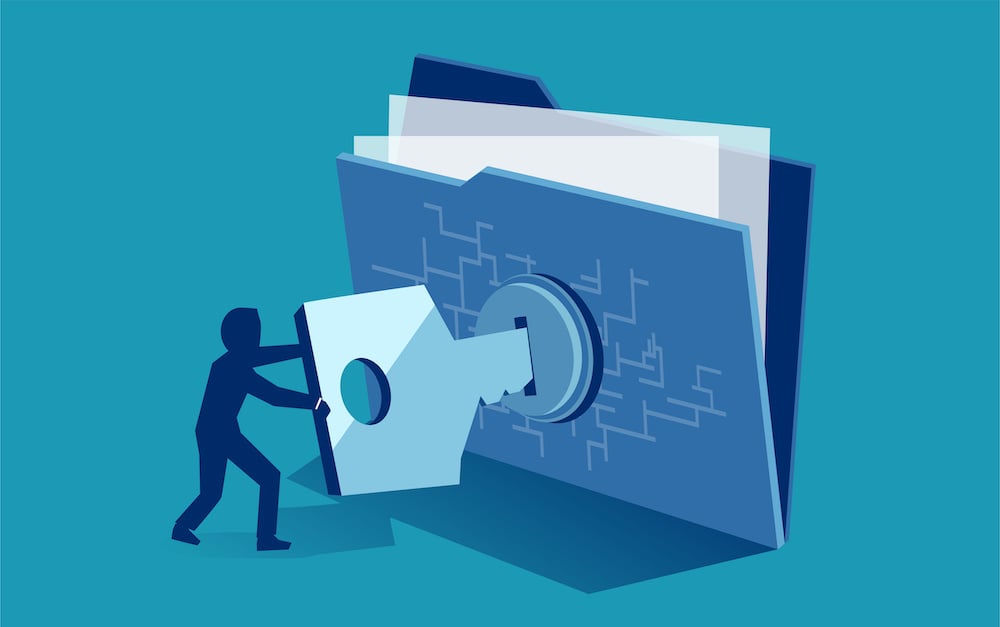

Data Loss Prevention (DLP) Best Practices & Strategies
Data loss prevention is a set of policies & procedures to protect sensitive data. Here are DLP strategies to implement across your network.


Exchanging data across networks and within enterprises requires security measures to protect the data from being lost or stolen. How do you ensure that your company’s sensitive data isn’t vulnerable to theft or unauthorized access? It all starts with understanding what data loss prevention is, and why it’s important for your business.
DLP is a set of policies and procedures designed to protect sensitive data from being inappropriately accessed, used, or disclosed. The objective of DLP is to minimize any possibility of information breaches. DLP policies and solutions can help mitigate data losses through encryption and authentication services as well as via encryption key management, intrusion detection systems, and vulnerability scanners. Data loss prevention helps ensure compliance with security regulations such as SOX, HIPAA, and PCI–DSS.
Data processing is a serious business, but if done carelessly, it can put the company at great risk. Here are some major causes of data loss.
Also read: Five Tips for Managing Compliance on Enterprise Networks
Data loss prevention isn’t just about preventing leakage of specific data. Rather, it’s about managing risks to all information assets so that data is secure at every stage of its lifecycle. From writing a strong security policy to implementing technologies that support DLP measures.
Even if you think you have an airtight data-security strategy in place, it’s important to get an outside perspective by speaking with industry experts and conducting data-breach simulations. These steps can help identify weaknesses, allowing you time to make adjustments before a real security breach occurs.
If any information leaves an organization — no matter what format it is in — it’s critical to include DLP measures as part of its security policy. No matter how sensitive data is protected initially, there will always be potential for risk as long as it exists somewhere within or outside the organization.
Tools like intrusion detection systems, data encryption, and strong access control all play key roles in keeping data secure, so they should all be included as part of your comprehensive data security plan.
If employees aren’t actively taking part in protecting data, your entire data security program will struggle. For instance, employees need to know about all relevant policies, as well as signs that indicate their company has been hacked and what to do if those signs appear.
You can never be too prepared when it comes to data security. Although some things may remain relatively unchanged for months, even years, other areas may require new data-security procedures on an almost daily basis.
After completing each review of your data security solutions, you’ll probably discover changes that need to be made, don’t wait until another year goes by before updating these solutions again.
Several industries can benefit from data loss prevention solutions. Whether an organization is a healthcare provider, financial institution, or governmental agency, it would be wise to integrate data loss prevention controls in their technology environment.
Also read: Object Storage vs. Block Storage: Which is Right for Your Enterprise?
The right DLP software can make a significant difference in protecting organizations from costly security breaches. Below are strategies for implementing DLP solutions to help enterprises stay safe.
An effective data protection strategy starts with understanding what data you need to protect most — and where it is located within your network. This includes knowing which users have access to sensitive data and how often they access it, so you can focus on securing critical data sets accordingly.
All rules must be enforceable, otherwise, they lose their power. You also don’t want to overwhelm your staff with overly restrictive policies that hinder productivity. When creating policies for data at rest and data in motion across all platforms, create rules that are easy to follow while still keeping data secure — so use cases are not restricted unnecessarily.
DLP training helps keep staff informed about protocols and procedures that keep company data safe when sharing internally or externally with clients.
Establishing monitoring tools such as data leak detection software gives you insight into how data flows throughout the organization and who has access to it. With more control over data flow, you can safeguard against possible vulnerabilities before they become full-blown incidents.
In addition to safeguarding data, you want to ensure that your data is secure when it’s in transit. To do so, invest in enterprise-grade DLP software that protects all devices connecting to your network — including mobile devices and PCs.
Although it’s helpful to deploy DLP software on every device, having a centralized platform for managing these apps is vital for businesses with large user bases. Regardless of where users access data — from a laptop or smartphone, and on-premises, or in the cloud — having a central location for managing and deploying policies makes it easier to manage your DLP strategy.
If you’re looking to secure data both at rest and in motion, encryption is key. Whether you choose a cloud-based or on-premises encryption solution. Having an enterprise-class encryption solution keeps your data safe even if it falls into unauthorized hands.
Sometimes data gets into places it shouldn’t be. When that happens, you want to have a plan for recovering from an incident quickly and effectively. Know how to recover from common DLP breach scenarios, including identifying malicious insiders who want to steal confidential data or attackers who are trying to disrupt operations. These plans can go a long way toward reducing IT costs associated with responding to data breaches.
The first step in combating data loss is implementing an effective DLP policy that lays out a strategy for preventing, detecting, and responding to potential data losses. A DLP program may not be your first response to a data breach, but if data loss occurs, you’ll want to have a system in place. DLP should be deployed before, rather than after, a breach. It’s not only a good idea but a necessity to implement a DLP program to prevent any form of sensitive data from being lost, stolen, or hacked.


Aminu Abdullahi is an experienced B2B technology and finance writer and award-winning public speaker. He is the co-author of the e-book, The Ultimate Creativity Playbook, and has written for various publications, including eWEEK, Enterprise Networking Planet, Tech Republic, eSecurity Planet, CIO Insight, Enterprise Storage Forum, IT Business Edge, Webopedia, Software Pundit, and Geekflare.

Enterprise Networking Planet aims to educate and assist IT administrators in building strong network infrastructures for their enterprise companies. Enterprise Networking Planet contributors write about relevant and useful topics on the cutting edge of enterprise networking based on years of personal experience in the field.
Property of TechnologyAdvice. © 2025 TechnologyAdvice. All Rights Reserved
Advertiser Disclosure: Some of the products that appear on this site are from companies from which TechnologyAdvice receives compensation. This compensation may impact how and where products appear on this site including, for example, the order in which they appear. TechnologyAdvice does not include all companies or all types of products available in the marketplace.